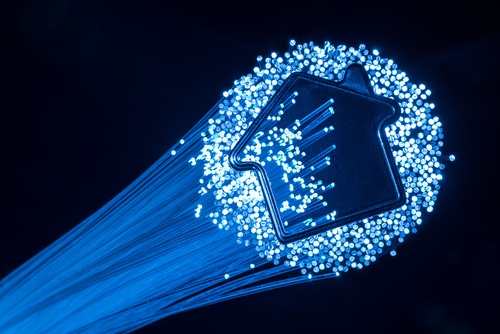Federal-level coordination needed to hasten end of digital divide, EEI says

As some states take an active role in helping Americans bridge the digital divide through novel broadband partnerships comprised of electric companies and a variety of other stakeholders, a coordinated approach is needed at the federal level to more quickly help close the gap, according to the Edison Electric Institute (EEI), which represents the nation’s investor-owned utilities.
“Such an approach should provide appropriate incentives that recognize electric companies’ valuable role in providing middle mile service,” EEI says in its new report, Middle Mile Broadband: Electric Companies Are Critical To Closing the Digital Divide. “Allowing electric companies to provide the middle mile infrastructure provides a cost-effective solution to communities.”
Federal-level coordination also would give internet service providers (ISPs) additional opportunities to broaden their service offerings to customers, while the revenue generated from leasing dark fiber would help to lower costs for electricity customers, according to the report.
“This is a win-win for all stakeholders, particularly the residents of underserved and unserved areas who will be able to start and grow their businesses, educate their children, and access life-saving medical care in their communities and homes,” EEI’s report says.
As many electric companies upgrade the energy grid and install more fiber to support their critical communications networks, EEI points out that they also have enough capacity to lease additional capacity to others, in turn helping to decrease broadband deployment costs in historically high-cost underserved and unserved communities.
Under such an arrangement, the electric company provides the “middle mile” infrastructure — the segment that connects a local access point to the major carriers and the broader internet — which the ISP will use to build out “last mile” broadband services to homes and businesses.
“Installing middle mile infrastructure typically is cost-prohibitive for ISPs in these areas, but partnering with electric companies allows both entities to build needed infrastructure cost-effectively and to reduce costs both for electric customers and new internet customers,” according to EEI’s report.
A federal approach that coordinates state-level laws could benefit such broadband partnerships, EEI points out.
In Alabama, for example, two recently passed broadband laws expand eligibility for electric providers to participate in state funding programs for middle mile and other broadband projects (SB 90; Act 2019-326), and allow electric providers to install, operate and maintain broadband systems, or partner with affiliates or third parties to do so, within their electric easements and rights-of-way (HB 400; Act 2019-326).
As a result, Alabama Power Co. has been able to forge alliances with companies like C Spire, a Mississippi-based telecommunications and technology services company, to make its infrastructure available to other broadband providers and expand high-speed broadband access and other connectivity solutions throughout its service territory.
And in Virginia, approval by the State Corporation Commission, along with what EEI calls “innovative state laws,” will allow Appalachian Power Co. (APCo) to bring affordable broadband to rural Grayson County, where the electric utility is installing more than 200 miles of middle mile fiber. The fiber will be used to upgrade APCo’s energy grid so it can deliver new services like smart meters for customers, as well as equipment and technology to pinpoint and correct faults on circuits, thereby allowing APCo to shorten any outages.
Also under APCo’s partnership with the county, it will lease fiber capacity to GigaBeam Networks, the ISP that will provide last-mile connectivity to Grayson County schools, libraries, public safety agencies, and residents, according to EEI’s report.
“High-speed internet is no longer a matter of convenience — it is a matter of necessity,” according to EEI’s report. “Bringing high-speed broadband access to underserved and unserved communities through expanding energy infrastructure that either is already, or soon-to-be, installed is a common-sense approach that maximizes these assets and reduces costs for customers.”
EEI recommends that policymakers help people living in underserved and unserved areas gain such access to reliable, cost-effective broadband by:
– Ensuring that electric companies are eligible and incentivized to participate in federal broadband grant programs;
– Creating a dedicated grant program to allow electric companies and other eligible entities to offset the costs of building out middle mile infrastructure to rural underserved or unserved communities; and
– Providing states flexibility to build out permanent rural broadband infrastructure.
Additionally, policymakers should develop a grant program to allow electric companies and other eligible entities to invest in a fixed wireless broadband approach in places where fiber buildout remains a challenge, “thus leveraging electric infrastructure to extend wireless service into the homes of underserved and unserved Americans,” EEI says in its report.
